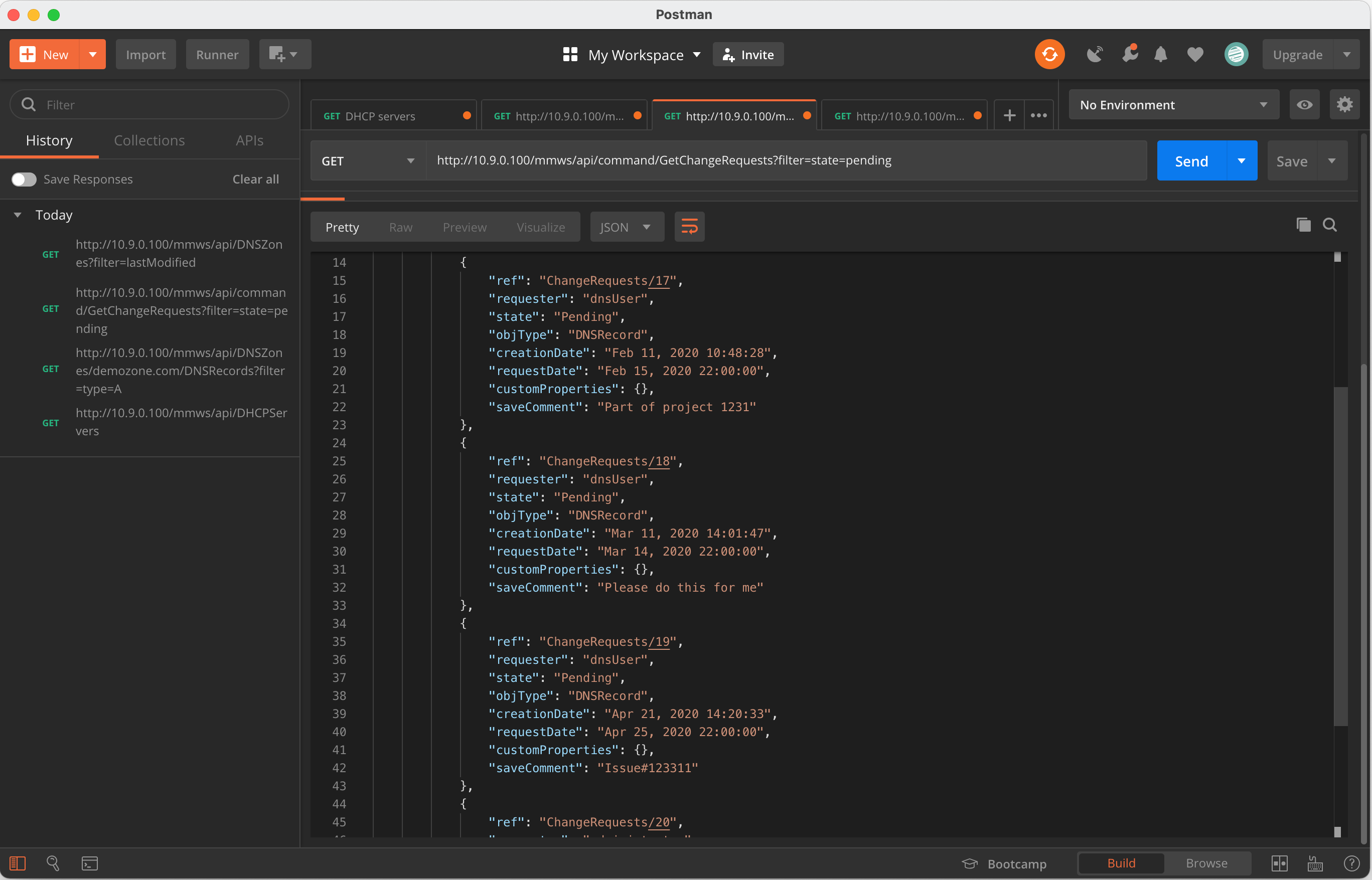Network infrastructure automation through APIs
By having a robust API, gives you the freedom to automate tasks, and therefore make managing your network infrastructure that much simpler.
Dec 7th, 2022
Let´s talk about automation. A robust API gives you the freedom to automate tasks and, in our case, make managing your network infrastructure that much simpler. In this blog, let´s dig deeper into APIs, what they are, and ultimately how they can be used for DDI network automation within the Micetro API.

Automation can take form in a non-programmatic way (such as through a GUI), but we cannot examine it without talking about API. After all, automation is at its best when it’s automated.
What is an API?
API stands for “Application Programming Interface” and in simple terms refers to the concept of exchanging data. The word is nowadays being used to refer to use cases such as automation, in the context of web services, although APIs can be used for more.
API is just an abstraction layer. When you’re using an application on your phone or computer, you connect to API endpoints of the operating system in order to communicate with the system. When you look up an address in Google Maps, a database entry in SQL, or just posting a comment on a website, all you do is send and receive data through APIs.
For the sake of this blog however, let´s have a look at what API means in the context of DNS, DHCP, and IP address management. That is why we are here after all!
In IP infrastructure automation, APIs are used to communicate with web services by pulling and pushing data. You can pull DNS zone information from Azure, send it to Akamai Fast DNS, ask about the DHCP leases on your Cisco router, or find the first available IP address in a subnet on your corporate network — all through the API. Micetro is, simply put, a graphical frontend for the API.
The big two: SOAP and REST APIs
When we talk about APIs in this quite specific context, we usually mean SOAP or REST. Micetro, in particular, uses the SOAP API to do its magic internally but provides a REST API for users as well.
SOAP (Simple Object Access Protocol)
SOAP was initially developed by Microsoft during the ‘90s. It was meant to replace older, binary protocols (like DCOM and CORBA) that didn’t play nice with the internet’s emerging new technologies. The specification was submitted to the IETF for standardization and became a W3C recommendation in 2003.
SOAP is and was always considered to be a standard. Thus, it is subject to many rules and incorporates much built-in (as well as extended) functionality. This can be good because a SOAP implementation will always have all functionality that doesn’t vary from vendor to vendor, but also means it requires more resources and is slower.
REST (Representational State Transfer)
REST was developed in parallel with HTTP itself. Therefore it’s usually considered to be more suitable for services that use HTTP and is highly reliant on the protocol.
As an architectural style, REST requires only a set of six guidelines to be satisfied:
- client-server architecture
- statelessness
- cacheability
- code on demand
- layered system
- uniform interface
REST is highly embedded in the “texture” of the internet through HTTP. It uses SSL for security. It can accept not only XML input, but also HTML, JSON, and YAML. Because REST doesn’t have strict rules to follow, sometimes implementation can be a hit-and-miss regarding security or functionality.
Which one’s better for IP infrastructure automation?
As we said, Micetro does its magic through SOAP. Not because we have anything against REST, we love it, and in fact offer a REST API to use.
REST is flexible, fast, and simple. It’s data-driven, stateless, and can cache API calls. On the other hand, REST can only use the HTTP protocol and is less secure (relies on SSL). SOAP can use multiple protocols, with built-in security. It’s function-driven, stateless but can be used stateful, and doesn’t cache API calls.
Depending on the use case, both have an edge. For public consumption, REST is generally considered to be better however for enterprise applications, or those requiring more functionality, SOAP tends to be better.
Automating Micetro
If you want to know more about how you can automate your network management using our robust API, you´re in luck! We have a dedicated Youtube playlist showing you some of the fantastic features we have! Check it out here.
Free Trial
Want to test out the most recent version of Micetro in your test lab? We offer a Free Trial for just such an occasion. Just download and install it to get your hands on it and see our amazing new and improved features!